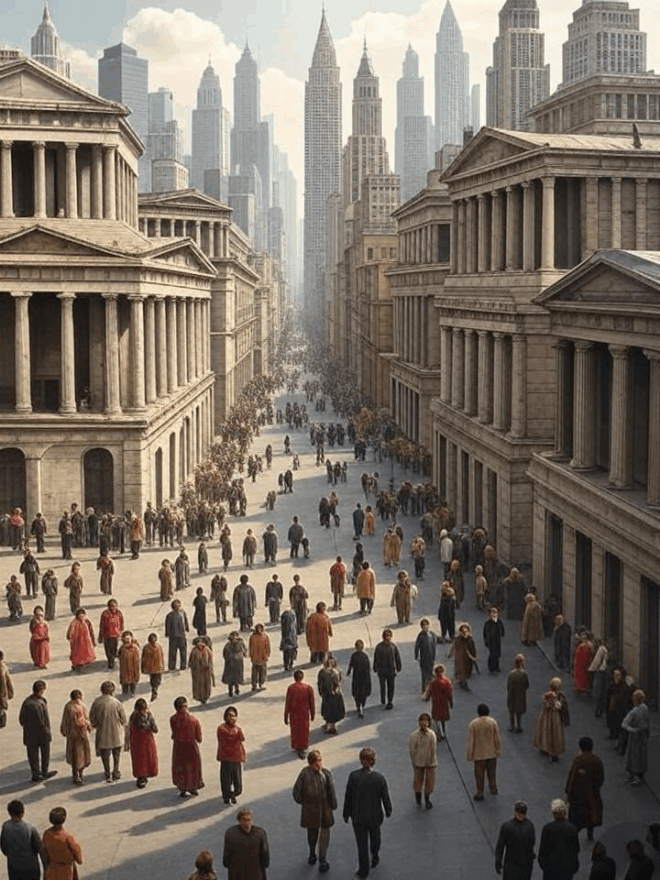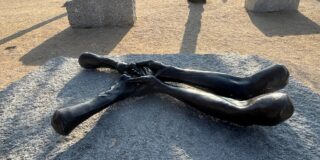
Introduction
The statement: “No culture’s history stands apart from the progress of humanity. Every culture moves through history hand in hand with every other culture. So it was, so it will forever be,” encapsulates a profound truth about human civilisation. It asserts that no society evolves in isolation; rather, the mosaic of human progress is crafted from threads of interaction, exchange, and mutual influence. Central to this interconnectedness is cultural diffusion, the process by which ideas, technologies, practices, beliefs, and artefacts spread across societies, fostering collective advancement and creating vibrant, hybrid identities. This phenomenon challenges the notion of cultural silos, where nations or groups are seen as advancing independently, and instead highlights the interdependence that has defined humanity since its earliest days.
From prehistoric hunter-gatherers exchanging tools and stories to the digital age where ideas traverse the globe instantly, cultures have always borrowed, adapted, and evolved together. The progress of humanity is not a solitary march but a collective symphony, where innovations in one region ripple outward, enriching others. For instance, the diffusion of agriculture from the Fertile Crescent around 10,000 BCE transformed nomadic lifestyles into settled civilisations across Europe, Asia, and beyond, driven by human movement and trade. Similarly, writing systems, evolving from Mesopotamian cuneiform to global alphabets, underscore how knowledge transcends borders.
Philosophically, this unity aligns with thinkers like Karl Marx, who viewed history as a web of interconnected developments, and Immanuel Kant, who envisioned a cosmopolitan society bound by reason. Today, globalisation amplifies this interconnectedness, rendering cultural isolation obsolete. Yet, this process is not always harmonious, encompassing conflict, exploitation, and homogenisation. Nevertheless, the outcome is progress—a cumulative elevation of human capabilities through shared cultural evolution.
This essay explores cultural diffusion as the engine of humanity’s interconnected progress, weaving together historical examples, mechanisms, philosophical perspectives, and future implications. We trace its manifestations from ancient trade routes to modern digital networks, examining how cultures have always advanced hand in hand, proving the statement’s timeless validity.
The Mechanisms of Cultural Diffusion: Engines of Collective Progress
Cultural diffusion operates through dynamic mechanisms that facilitate the exchange of cultural elements, binding societies in a shared trajectory of progress:
- Trade: Trade networks have long served as conduits for goods and ideas. The Silk Road, active from 130 BCE to the 14th century CE, connected China to the Mediterranean, carrying silk, spices, and inventions like paper westward while spreading Buddhism eastward. Maritime routes, like the Spice Trade, linked Southeast Asia, India, and Europe, diffusing culinary practices alongside commodities, creating hybrid cuisines still enjoyed today.
- Migration: Human mobility carries cultural elements to new lands. Polynesian navigators spread languages and myths across the Pacific, while the African diaspora during the slave trade introduced rhythms that shaped American jazz, blending with European and indigenous influences. Migration fosters cultural synthesis, enriching host societies.
- Conquest and Colonisation: Military expansions impose and absorb cultural elements. Alexander the Great’s conquests in the 4th century BCE forged the Hellenistic world, merging Greek philosophy with Persian and Egyptian traditions, fostering hubs like the Library of Alexandria. Roman aqueducts and roads, diffused across Europe, influenced subsequent civilisations.
- Communication and Technology: Advancements in communication accelerate diffusion. The invention of writing in Mesopotamia around 3200 BCE spread administrative practices globally. Today, the internet and social media share ideas instantly, from scientific research to viral trends, connecting billions.
- Diplomacy and Cultural Exchange: Formal interactions, such as medieval scholarly exchanges between Islamic and European courts, preserved classical knowledge. Modern cultural festivals blend traditions, like orchestras fusing Western and Asian instruments.
These mechanisms interplay, creating bidirectional flows that adapt elements to new contexts, yielding hybrid vigour, stronger cultural forms. For example, the wheel, invented in Mesopotamia around 3500 BCE for pottery, diffused via trade to revolutionise transportation worldwide, highlighting economic interdependence. This ensures no culture’s history is standalone; each contributes to and draws from a shared human reservoir, driving collective evolution.
Ancient Foundations: Cultural Diffusion in Early Civilisations
The dawn of civilisation reveals humanity’s innate drive for interconnection through cultural diffusion. The Neolithic Revolution, around 10,000 BCE, saw agriculture spread from the Fertile Crescent to Europe, Asia, and Africa, transforming nomadic groups into settled societies. This diffusion, driven by migration and trade, enabled urban development in regions like the Indus Valley and Mesoamerica, laying foundations for complex civilisations.
The Silk Road epitomises ancient, diffusion’s scope. Chinese innovations—paper (105 CE), gunpowder, and the compass, travelled west, revolutionising European literacy, warfare, and navigation. Conversely, Indian Buddhism influenced Chinese art and architecture, with pagodas evolving from stupas. The concept of zero, developed in India and transmitted via Arab traders, underpinned global mathematical advancements.
Maritime networks were equally vital. The Spice Trade connected Southeast Asia with Europe, spreading spices like pepper and culinary practices that fused Indian flavours into Middle Eastern dishes, influencing global gastronomy. In the Americas, maize cultivation diffused from Mesoamerica to the Andes, supporting empires like the Inca through advanced farming techniques.
Conquest amplified diffusion. The Persian Empire’s administrative systems, including coinage and postal relays, influenced Greek governance post-Alexander, creating the Hellenistic synthesis that birthed Euclid’s geometry. Even isolated cultures, like Polynesians, navigated vast oceans, spreading languages and myths, proving no society was truly disconnected.
Metallurgy’s diffusion further illustrates this. Bronze-working, originating in the Near East around 3000 BCE, spread to Europe, enabling stronger tools. Iron smelting from Anatolia diffused to Africa and Asia, transforming agriculture and warfare. These leaps required traded raw materials, underscoring interdependence.
Religious diffusion also unified societies. Zoroastrianism’s concepts of dualism influenced Judaism, Christianity, and Islam. Hinduism’s spread to Southeast Asia shaped Khmer architecture, as seen in Angkor Wat. These exchanges wove a shared spiritual framework, binding diverse cultures.
Ancient diffusion demonstrates that no culture progressed alone. Innovations from one region reshaped others, ensuring collective advancement. Cultures moved hand in hand, their histories intertwined from the outset, setting the stage for future interconnections.
Medieval and Renaissance Exchanges: Diffusion Through Conflict and Curiosity
The medieval period (5th–15th centuries), often mischaracterised as stagnant, was a crucible for cultural diffusion, bridging East and West despite adversity. The Crusades (1095–1291 CE), though violent, facilitated exchanges. European knights returned with Arabic numerals, Avicenna’s medical texts, and pointed arches, catalysing Gothic architecture and the Renaissance’s intellectual spark.
The Mongol Empire’s Pax Mongolica (13th–14th centuries) revitalised the Silk Road, enabling traders like Marco Polo to spread Chinese technologies, like gunpowder, to Europe, transforming warfare. Islamic scholarship in medicine and mathematics reached European universities, while Mongol postal systems inspired communication networks.
In Africa, trans-Saharan trade connected sub-Saharan empires like Mali with North Africa and Europe. Gold and salt exchanges brought Islamic learning to Timbuktu, a multicultural scholarly hub blending African oral traditions with Arab manuscripts, preserving knowledge lost elsewhere.
The Renaissance (14th–17th centuries) was a pinnacle of diffused synthesis. Islamic preservation of Greek texts, enriched by Arab algebra and astronomy, fuelled Europe’s intellectual revival. Humanism blended ancient ideas, with artists like Leonardo da Vinci drawing on Eastern perspectives via trade. The printing press (circa 1440) amplified diffusion, spreading ideas across continents.
The Age of Exploration (15th–17th centuries) intensified exchanges. Driven by spice quests, explorers like Vasco da Gama and Christopher Columbus opened routes. The Columbian Exchange swapped crops, potatoes and tomatoes to Europe, wheat and horses to the Americas, along with diseases and peoples, reshaping global demographics. African rhythms fused with European melodies in American music, while languages evolved into creoles.
Scholasticism exemplifies this era’s synthesis: Thomas Aquinas integrated Aristotelian logic, preserved by Arabs, with Christian theology, shaping Western thought. In East Asia, Confucian ideas diffused to Japan and Korea via diplomacy, influencing governance. The Black Death, spread via trade, paradoxically advanced medical knowledge through shared responses.
These exchanges show that even conflict accelerated diffusion, intertwining cultures and advancing humanity collectively. Progress in navigation, science, and art was shared, affirming no history stands apart.
Colonialism and Imperialism: The Dual-Edged Sword of Diffusion
Colonialism (16th–20th centuries) embodies cultural diffusion’s complexity, blending progress with exploitation. European empires imposed systems on the Americas, Africa, and Asia while absorbing local elements, creating uneven but interconnected advancements.
In the Americas, Spanish and Portuguese colonisers introduced Christianity, agriculture, and livestock, but extracted silver and gold, fuelling global trade. The Atlantic Slave Trade forcibly migrated millions of Africans, whose cultural contributions; music, cuisine, Vodou, blended with indigenous and European traditions, birthing hybrids like Brazilian samba and Creole languages.
In Asia, British rule in India facilitated exchanges of tea, textiles, and bureaucracy. Indian mathematics, including the decimal system, influenced Western science, while English spread as a global lingua franca, often eroding local dialects but enabling international discourse. In Africa, colonial borders disrupted tribal systems but introduced railroads and education. African art inspired Picasso’s Cubism, revitalising European modernism.
Imperial legacies include democratic ideals fuelling independence. Gandhi’s non-violence synthesised Indian ahimsa with Western philosophy, exemplifying hybrid resistance. The Opium Wars diffused Western industrialism to China, sparking reforms, while Chinese porcelain shaped European ceramics.
Despite atrocities like genocide and cultural erasure, colonialism accelerated diffusion, spreading technologies like telegraphy and medicine. It forced adaptations, yielding hybrids like Latin American magical realism, blending indigenous myths with European narratives. In the Pacific, colonial whaling spread American influences, mixing with Polynesian customs.
This era highlights diffusion’s dual nature: exploitative yet connective, intertwining histories and advancing humanity, albeit unevenly.
Modern Globalisation: Diffusion at Unprecedented Speed
The Industrial Revolution (18th–19th centuries) supercharged cultural diffusion. Steamships and railroads enabled mass migration, blending cultures in urban melting pots like New York, where Italian, Irish, and Jewish traditions fused. Colonial resources fuelled European industry, while manufactured goods spread globally.
20th-century world wars, though destructive, unified humanity through shared trauma, birthing the UN for diplomatic exchanges. Post-WWII globalisation surged with air travel, television, and the internet, making diffusion instantaneous.
Today, Hollywood films incorporate global themes, spreading values while adopting international stars. K-pop and Bollywood spawn fusion genres like reggaeton. McDonald’s globalises menus, adapting to local flavours, embodying cultural synthesis. Social media diffuses activism, as seen in the Arab Spring or #MeToo, connecting billions.
The COVID-19 pandemic underscored interdependence, with vaccines emerging from global collaboration. E-commerce diffuses artisanal crafts, preserving traditions, while AI translates languages, bridging gaps. Yet, globalisation risks homogenisation, with dominant cultures overshadowing local ones. Hybrids like world music and fusion cuisine counter this, enriching humanity.
Climate change solutions demand global cooperation, highlighting shared fates. For example, renewable energy technologies, diffused from Europe to Asia, blend with indigenous knowledge for sustainability. This confirms modern progress as collective, with cultures evolving together.
Philosophical Reflections: The Unity of Human Progress
Philosophers have long recognised cultural interconnectedness as a driver of progress. Immanuel Kant’s cosmopolitan vision sees reason uniting cultures in a global society. Sri Aurobindo’s integral philosophy envisions harmony without erasing diversity. Karl Marx viewed history as a global dialectic, with economic and cultural forces uniting societies across borders.
John Gray, sceptical of linear progress, acknowledges inescapable interconnections. Hegel’s dialectics portray cultural clashes yielding syntheses, mirroring diffusion’s creative outcomes. Postmodernists like Derrida highlight hybridity, challenging notions of pure cultural identities.
These perspectives affirm cultural diffusion as the binding force of humanity’s progress, with interconnectedness as a moral and practical imperative. The goodness of progress lies in its shared nature, as cultures advance hand in hand.
The Future: Perpetual Interconnection Through Diffusion
Looking ahead, cultural diffusion will intensify. AI and virtual reality will enable immersive cultural experiences, fostering empathy across borders. Space exploration may create cosmic hybrids, uniting humanity against universal challenges. Blockchain could diffuse decentralised governance, while biotech shares medical advancements globally.
Challenges like nationalism may resist diffusion, but global crises, pandemics, climate change, compel collaboration. Sustainable development will blend indigenous knowledge with modern tech, ensuring cultures evolve together.
Cultural festivals, blending traditions worldwide, and digital platforms sharing local stories will deepen interconnectedness. The future promises a world where cultures advance hand in hand, affirming perpetual progress.
Expanding the Narrative: Specific Arenas of Cultural Diffusion
To fully grasp cultural diffusion’s role in humanity’s interconnected progress, consider its impact across specific domains:
Language as a Vehicle of Diffusion
Language carries cultural worldviews, diffusing ideas across borders. The spread of Indo-European languages from the Eurasian steppes to Europe and India reflects ancient migration. Latin, diffused via Roman conquests, evolved into Romance languages, embedding terms like “democracy” into global lexicons.
Colonialism spread English as a lingua franca, enabling scientific discourse but often suppressing indigenous tongues. Today, internet slang creates hybrids like “Spanglish” or “Hinglish,” enriching communication. Pidgins and creoles, like Tok Pisin in Papua New Guinea, blend English with local dialects, showcasing diffusion’s creative power.
Artistic Diffusion: A Canvas of Shared Creativity
Art vividly reflects diffusion. Impressionism in 19th-century France drew from Japanese ukiyo-e prints, introduced via trade, inspiring van Gogh’s bold styles. African masks influenced Picasso’s Cubism, reshaping modern art. Street art, from New York’s graffiti to global murals, diffuses social messages, while hip-hop, rooted in African-American communities, fuses with local sounds in Korean rap or Afrobeat.
Literature follows suit: Latin American magical realism, blending indigenous myths with European narratives, inspires global authors, creating a shared literary heritage.
Economic Diffusion: Shared Prosperity and Systems
Economic models diffuse, shaping global systems. Capitalism, spread via colonialism, adapted into state-led variants in Asia, like China’s market socialism. Microfinance, from Bangladesh’s Grameen Bank, empowered women globally. Trade agreements like NAFTA blended economies, diffusing labour practices and fostering interdependence.
Scientific Diffusion: Collective Knowledge Advancement
Science thrives on diffusion. The scientific method, rooted in Islamic Golden Age empiricism, spread to Europe, shaping modern inquiry. Vaccines, from Jenner’s smallpox to mRNA technologies, rely on global collaboration, as seen in COVID-19 responses. Open-access research and international conferences further accelerate shared discoveries.
Religious and Ethical Diffusion: Shared Moral Frameworks
Religious ideas have long unified societies. Zoroastrianism’s dualism influenced Judaism, Christianity, and Islam, shaping global ethics. Hinduism’s diffusion to Southeast Asia crafted Angkor Wat’s grandeur. Modern interfaith dialogues and secular ethics, blending Eastern and Western philosophies, foster universal values.
Conclusion
Cultural diffusion weaves humanity’s shared mosaic of progress. From ancient trade routes exchanging silk and ideas to digital networks sharing knowledge instantly, no culture’s history stands apart. This interconnected journey—through agriculture, art, language, science, and ethics—demonstrates that humanity advances collectively. As we face future challenges, from AI ethics to space exploration, cultures will continue evolving hand in hand, affirming: so it was, so it will forever be.
The ongoing diffusion of renewable technologies, global festivals blending traditions, and digital platforms sharing local stories reinforces this truth. Humanity’s progress is a shared endeavour, its future bound by the same interconnected spirit that has always driven us forward.


